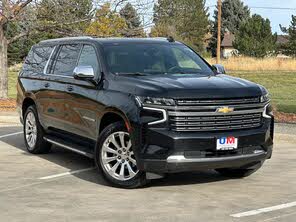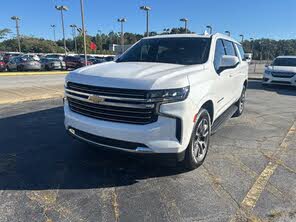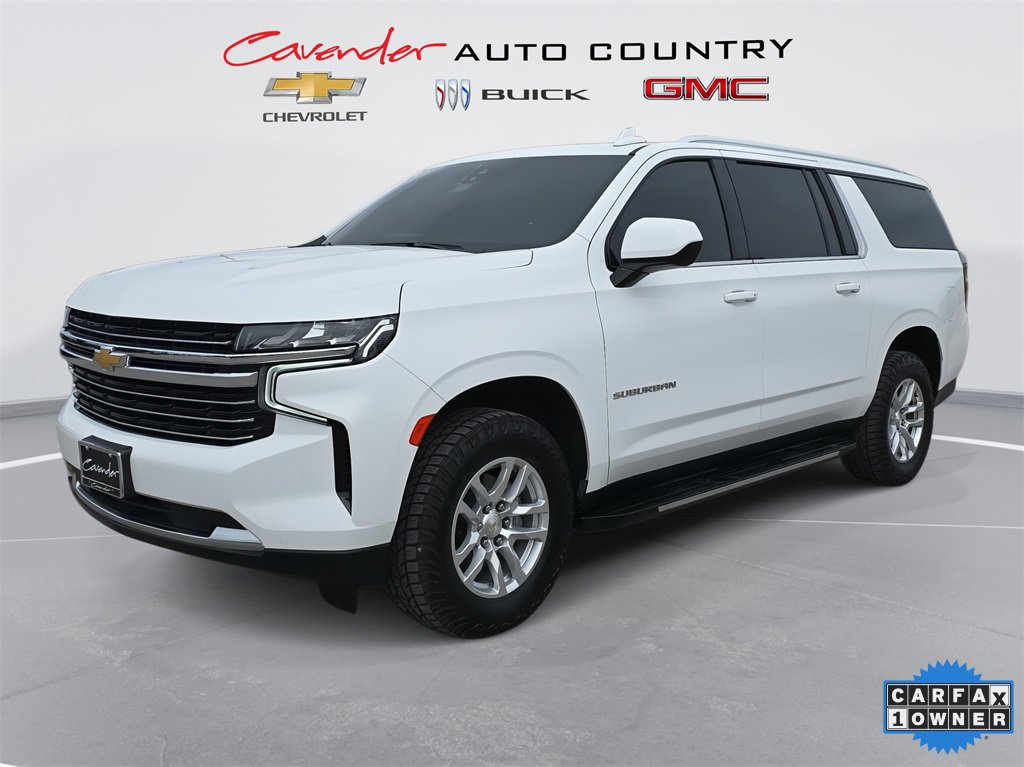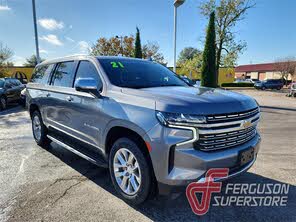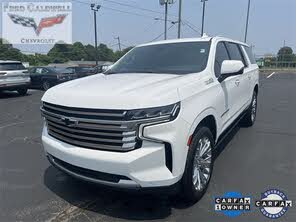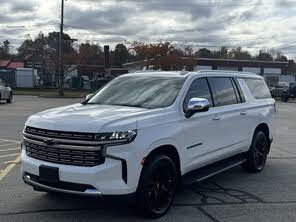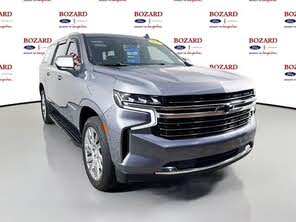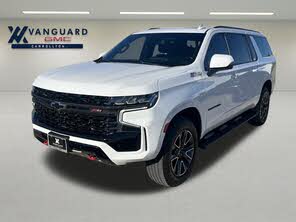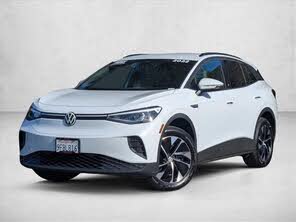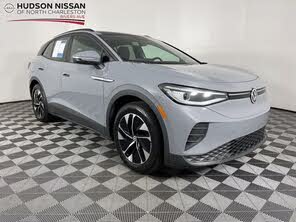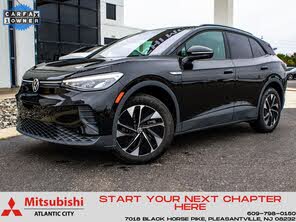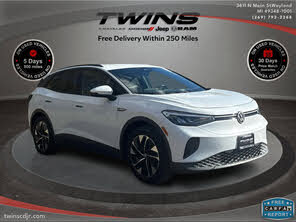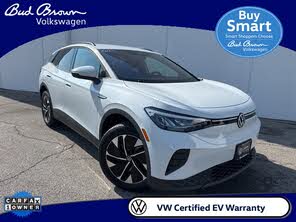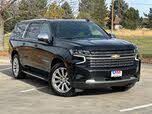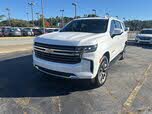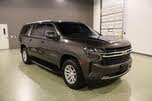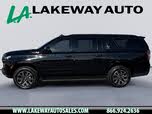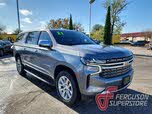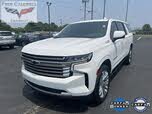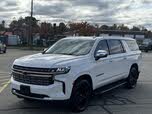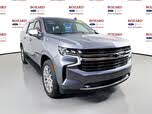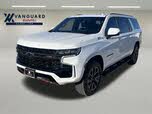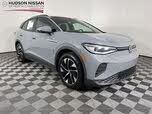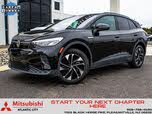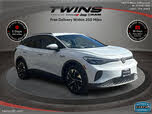2021 Chevrolet Suburban vs 2022 Volkswagen ID.4
Overview | |
MSRP$51,000 | MSRP$41,230 |
Listings889 | Listings203 |
Ratings & Reviews | |
User Reviews | User Reviews |
Expert reviews7.7 out of 10 | Expert reviews |
Pros
Cons
| |
2021 Chevrolet Suburban Reviews SummaryThe Chevrolet Suburban is one of the oldest car model names still on the market, dating back to 1934. For most of its lifetime, it’s been a spacious, capable SUV with plenty of passenger space. As the auto industry has evolved (especially in the past two decades), this type of SUV has become more obsolete. Many automakers have developed car-based crossovers and SUVs. And yet, there is still a need for truck-based full-size SUVs with plenty of towing power and no-compromise cabin space. The 2021 Chevrolet Suburban is an examination of how an automaker maintains this traditional SUV format while incorporating modern technology and amenities. GM has also responded to the need for improved fuel economy, offering a new turbodiesel powertrain. Read on to learn if Chevy was able to pull this off with the new Suburban. | |
2022 Volkswagen ID.4 Reviews Summary | |
No video found | No video found |
Popular Features & Specs | |
Engine5.3L 355 hp V8 | Engine201 hp Electric |
Drive Train4X2 | Drive TrainRWD |
Seating Capacity9 | Seating Capacity5 |
Horsepower355 hp @ 5600 rpm | Horsepower |
EV Battery Capacity | EV Battery Capacity82 kWh |
MPG City15 | MPG City116 |
MPG Highway20 | MPG Highway98 |
Battery Charge Time (240V) | Battery Charge Time (240V)7.5 hours |
Engine | |
Engine Name5.3L 355 hp V8 | Engine Name201 hp Electric |
Torque383 lb-ft @ 4100 rpm | Torque |
Horsepower355 hp @ 5600 rpm | Horsepower |
Battery Charge Time (240V) | Battery Charge Time (240V)7.5 hours |
Drivetrain4X2 | DrivetrainRWD |
Fuel Economy | |
EV Battery Capacity | EV Battery Capacity82 kWh |
MPG City15 | MPG City116 |
MPG Highway20 | MPG Highway98 |
Interior | |
Seating Capacity9 | Seating Capacity5 |
Key Features | |
Navigation System | Navigation SystemOptional |
Safety | |
Front Crash Overall4 | Front Crash Overall5 |
Side Crash Overall5 | Side Crash Overall5 |
Dimensions & Capacity | |
Cargo Space41.5 cu ft | Cargo Space30.3 cu ft |
Curb Weight5616 lbs | Curb Weight4568 lbs |
Height75.7 in | Height64.6 in |
Length225.7 in | Length180.5 in |
Width81.1 in | Width72.9 in |
Wheelbase134.1 in | Wheelbase108.9 in |
Maximum Payload1750 lbs | Maximum Payload937 lbs |
Number of doors4 | Number of doors4 |
Maximum Towing Capacity8300 lbs | Maximum Towing Capacity2200 lbs |
Standard Towing Capacity7800 lbs | Standard Towing Capacity2200 lbs |
Overview | ||
MSRP | $51,000 | $41,230 |
Listings | ||
Ratings & Reviews | ||
User reviews | ||
Expert reviews | 7.7 out of 10Read full review | |
Pros & cons | Pros
Cons
| |
Summary | The Chevrolet Suburban is one of the oldest car model names still on the market, dating back to 1934. For most of its lifetime, it’s been a spacious, capable SUV with plenty of passenger space. As the auto industry has evolved (especially in the past two decades), this type of SUV has become more obsolete. Many automakers have developed car-based crossovers and SUVs. And yet, there is still a need for truck-based full-size SUVs with plenty of towing power and no-compromise cabin space. The 2021 Chevrolet Suburban is an examination of how an automaker maintains this traditional SUV format while incorporating modern technology and amenities. GM has also responded to the need for improved fuel economy, offering a new turbodiesel powertrain. Read on to learn if Chevy was able to pull this off with the new Suburban. | |
Video | No video found | No video found |
Popular Features & Specs | ||
Engine | 5.3L 355 hp V8 | 201 hp Electric |
Drive Train | 4X2 | RWD |
Seating Capacity | 9 | 5 |
Horsepower | 355 hp @ 5600 rpm | |
EV Battery Capacity | 82 kWh | |
MPG City | 15 | 116 |
MPG Highway | 20 | 98 |
Battery Charge Time (240V) | 7.5 hours | |
Engine | ||
Engine Name | 5.3L 355 hp V8 | 201 hp Electric |
Torque | 383 lb-ft @ 4100 rpm | |
Horsepower | 355 hp @ 5600 rpm | |
Battery Charge Time (240V) | 7.5 hours | |
Drivetrain | 4X2 | RWD |
Fuel Economy | ||
EV Battery Capacity | 82 kWh | |
MPG City | 15 | 116 |
MPG Highway | 20 | 98 |
Interior | ||
Seating Capacity | 9 | 5 |
Key Features | ||
Navigation System | Optional | |
Safety | ||
Front Crash Overall | 4 | 5 |
Side Crash Overall | 5 | 5 |
Dimensions & Capacity | ||
Cargo Space | 41.5 cu ft | 30.3 cu ft |
Curb Weight | 5616 lbs | 4568 lbs |
Height | 75.7 in | 64.6 in |
Length | 225.7 in | 180.5 in |
Width | 81.1 in | 72.9 in |
Wheelbase | 134.1 in | 108.9 in |
Maximum Payload | 1750 lbs | 937 lbs |
Number of doors | 4 | 4 |
Maximum Towing Capacity | 8300 lbs | 2200 lbs |
Standard Towing Capacity | 7800 lbs | 2200 lbs |

By: CarGurus + AI
At CarGurus, our team of experienced automotive writers remain at the heart of our content operation, conducting hands-on car tests and writing insightful guides that are backed by years of industry experience. To complement this, we are harnessing AI to make our content offering more diverse and more helpful to shoppers than ever. To achieve this, our AI systems are based exclusively on CarGurus content, ratings and data, so that what we produce is both unique to CarGurus, and uniquely helpful to car shoppers.


